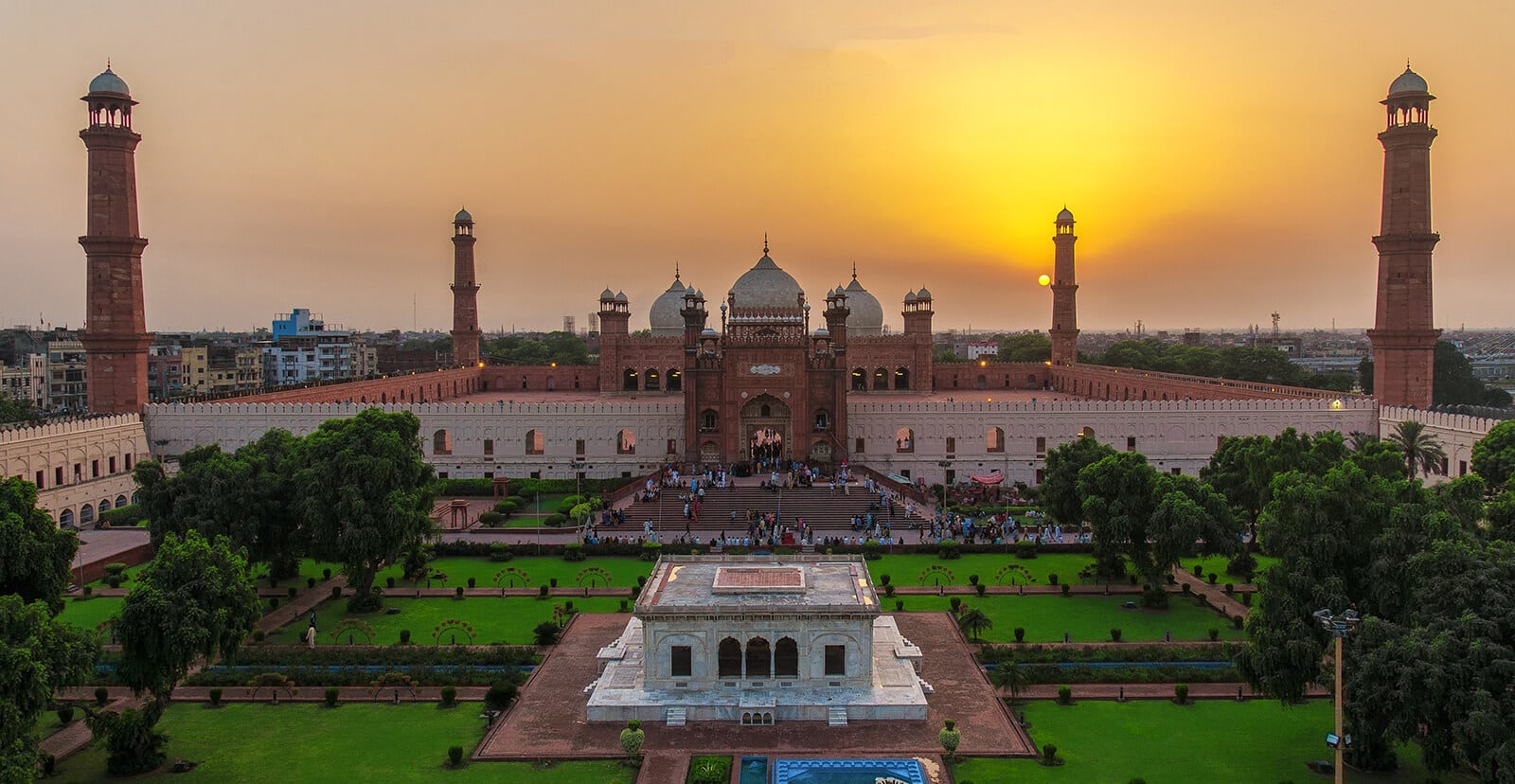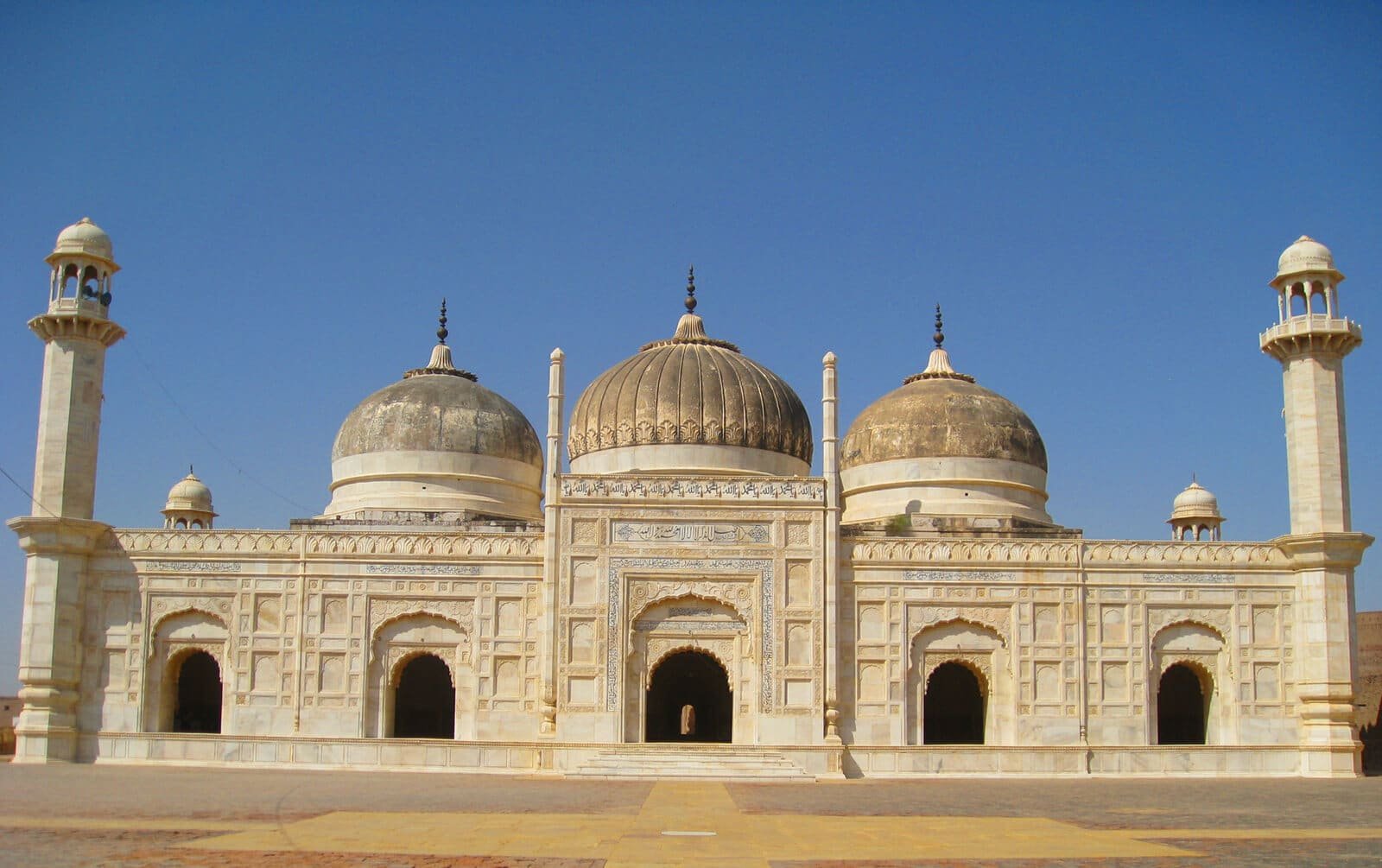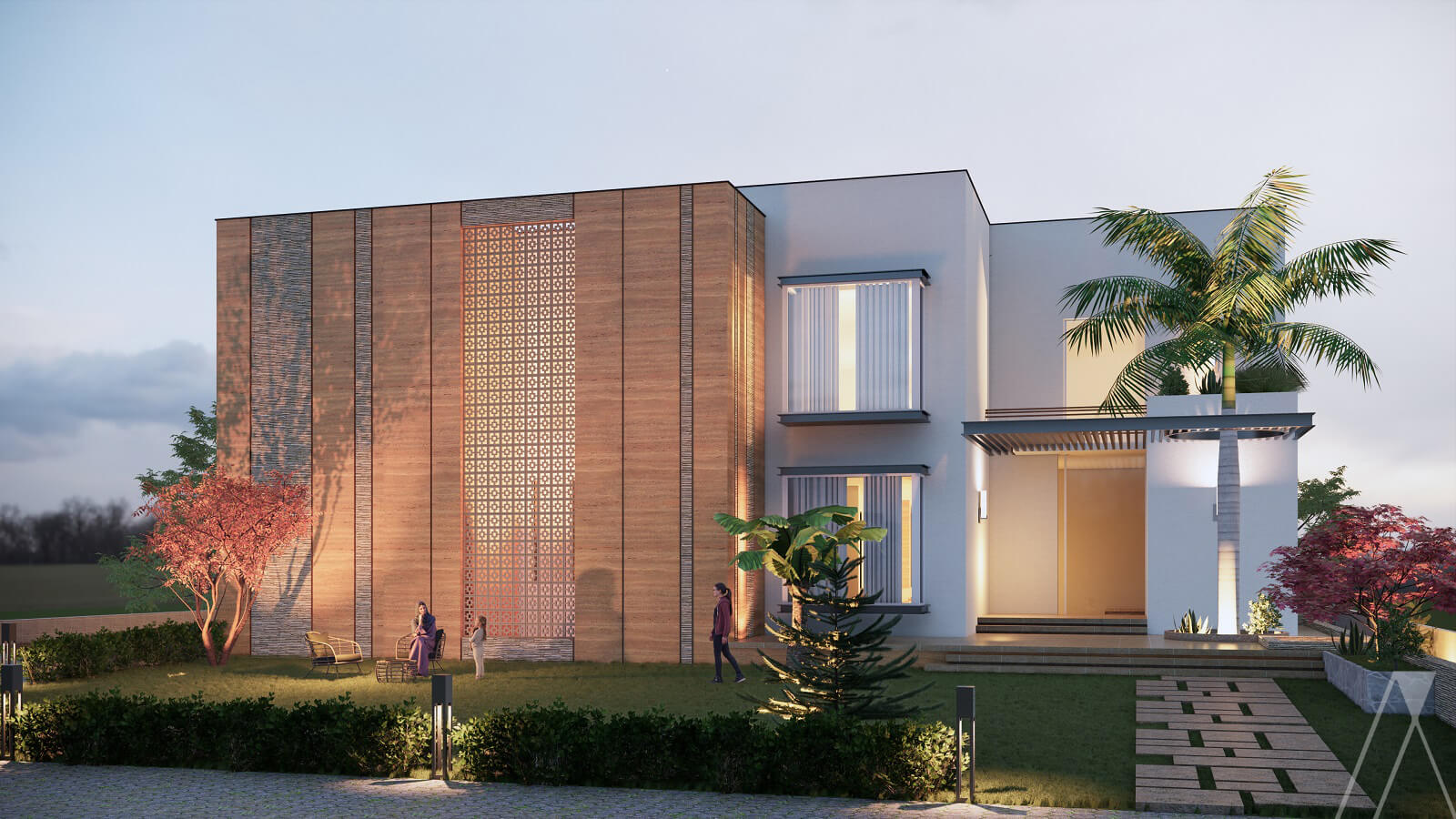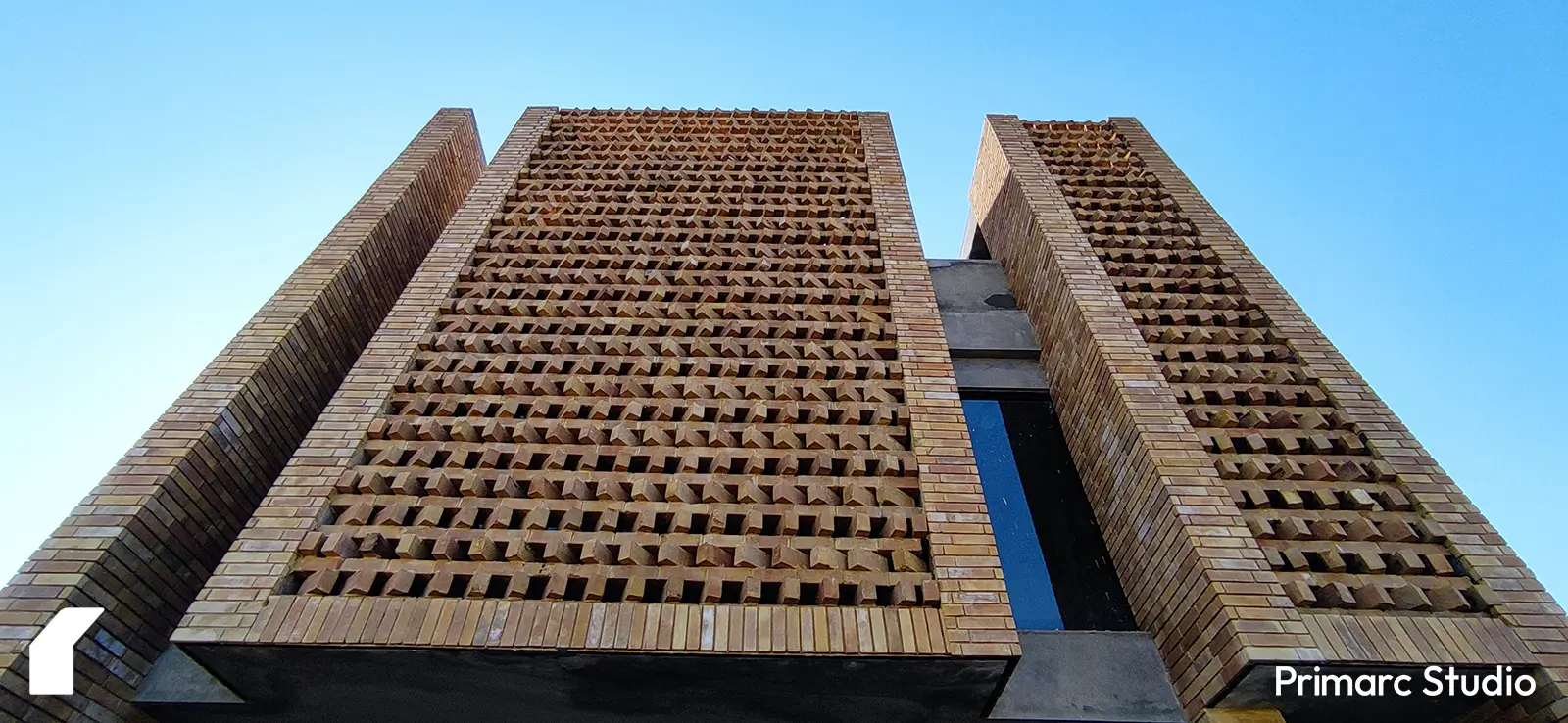Rich in culture and diversity, Pakistan boasts a vast array of natural and manufactured treasures, attracting masses of visitors from all over the world. Pakistan’s rich architectural heritage is further enhanced by its rich heritage of mosques, both predating its inception and afterwards. Standing as symbols of peace, brotherhood, and spirituality, these mosques are a stunning historical oeuvre of Pakistan’s multicultural identity and religious heritage.
The architectural styles of these mosques, with their towering minarets, cascading domes, and breathtaking interiors, strongly reflect influences of Buddhism, Indus Valley civilization, the Mughal era, and Hinduism.
Although intended for congregational purposes and prayers, mosques also offer a keen insight into the history of their location through their elaborate architectural designs. Below, we will briefly discuss only some of the mosques located in Pakistan that are famous for attracting the attention of the masses.
1. Jamia Masjid Banbhore
Location: Banbhore, Sindh

Aptly known as one of Pakistan’s oldest mosques, Banbhore mosque is located in a city whose presence dates back to 1 century BC. It is also famous for its conquest by Muhammad Ibn Qasim in 711 AD.

Interestingly, this mosque has a definite wall facing the qibla (Mecca), yet it does not have a mihrab niche. The mosque depicts inscriptions dating to 727 AD, making its preservation an archaeological wonder for the world.
2. Chaqchan Mosque
Location: Khaplu, Gilgit Baltistan
This mosque was initially a monastery constructed as a devotion to the Buddhist faith and subsequently named “Ju-Khang”. However, after the arrival of Islam, it was reconstructed into a mosque (Jamia Masjid) in the 7th Century.

The Kashmiri-style Chaqchan Mosque was named Chaqchan as it meant “Miraculous”.
Its architecture is a fusion of Tibetan, Persian and Mughal styles. A two-story cubic complex, its walls are reinforced with clay and mud to fill the void between stacked wooden slabs. This construction method is a recurrent practice in the Kashmir area as it effectively preserves the structures in harsh weather. The turret atop the ground floor and semi-basement is exquisitely framed inside a wooden lattice facade. The craftsmanship that went into construction makes this mosque a precious treasure of time.
3. Amburiq Mosque
Location: Shigar, Gilgit Baltistan
Shigar Valley’s natural beauty is further enhanced by its oldest mosque, Amburiq mosque. Built by Sayed Ali Hamdan in the 14th Century, the mosque is made entirely of wood in the traditional Balti style of architecture. The traditional “cribbage and cator” technique using timber and stone deviates from the conventional pattern due to its visibility from its lantern tower.

The entirety of the mosque’s wooden structure is supported by several large wooden columns intricately carved with floral and geometric patterns.

The structure resembles a wooden shell based on cribs and beams, and the exterior is full of floral and bird carvings. Inside is a prayer hall with a verandah to the east that serves as an entrance hall. The mosque’s prayer hall is divided into two sections: the front section for men and the back for women. The mosque’s walls are decorated with colourful frescoes depicting scenes from Islamic history and tradition. The frescoes are believed to have been painted by local artists using traditional techniques and natural pigments.
4. Neevin Mosque
Location: Lahore, Punjab
A byproduct of the Lodi dynasty’s cultural patronage, Neevin Mosque stands tall as a proud remnant of the pre-Mughal era. Its foundation further enhances its mystique, which lies 25 feet below street level within Lahore’s ancient Walled City.

The mosque itself features short domes, an advanced water management system, underground wells, and divided prayer halls for men and women. The architectural wonder’s historical integrity remains intact, further elevating Lahore’s stature and rich historical past.
5. Begum Shahi Mosque
Location: Lahore, Punjab

The Walled City of Lahore hides another gem in its midst: the Begum Shahi Mosque. Built in the early 17th Century, the mosque was built as a homage by the Mughal Emperor Jahangir to his mother, Maryam Zamani Begum.

This unique mosque features Mughal-era Frescoes adorning a series of low domes. The mosque’s hall is divided into five bays topped by three arches.
6. Dai Anga Mosque
Location: Lahore, Punjab
Another Mughal-era artifact is the Dai Anga mosque, named after Shah Jan’s wet nurse. Built-in 1635, it is one of Lahore’s best-used mosques of the Mughal era.

This vibrant mosque stands tall near the Lahore Fort with sandstone walls and wooden screens. Three prominent domes, captivated pillars, tall minarets, cupolas, and marble floors quickly establish the richness of Mughal architecture.
7. Moti Masjid
Location: Lahore, Punjab
Out of all the mosques Lahore can boast, Moti Masjid is its shining pearl. The 17th-century religious building is located inside the Lahore Fort and was constructed entirely in white marble by Mughal emperors Jahangir and Shah Jahan.

The five-arched facade of this mosque distinguishes it from others, along with the columns decorated with pietra dura work in friezes and crenelation in exquisite light colours.
8. Wazir Khan Mosque
Location: Lahore, Punjab
The Wazir Khan Mosque, completed in 1641, was commissioned during the reign of the Mughal Emperor Shah Jahan. Known for its extensive tile work, it is a pinnacle of Mughal architecture, nestled snugly within the Walled city of Lahore.

The mosque’s interior is carved from dressed brick and embellished with glazed tile mosaic, making it a breathtaking testament to Persian art.

9. Shahi Mosque, Chiniot
Location: Chiniot, Punjab
Built by Hakim Saad-Ullah Khan in 1655, Shahi Mosque is situated in the heart of Chiniot. A brick and black-streaked stone structure with three domes and four corner towers, this mosque was beautifully decorated with fresco paintings on a red background.

The front façade consists of nine pairs of multifoil arches. The base of the columns, shafts, and arches bear proof of inspiration drawn from Mughal architecture. A projected gateway led by a flight of steps makes the main entrance conspicuous. In terms of form, it closely resembles Jamia Masjid Delhi.

The internal court has an ablution pool and three domes over a gallery bordering the prayer hall.
10. Shah Jahan Mosque
Location: Thatta, Sindh
The Shah Jahan Mosque is a 17th-century building that serves as the central mosque for the city of Thatta, Sindh. It was built during the reign of Mughal emperor Shah Jahan.
The mosque’s brick structure and profuse tilework suggest that it was subsidized by imperial coffers. The plan of the prayer chamber and even its elevation appear to have been derived from the Timurid design tradition.

Unlike all other Mughal-period mosques, the Thatta mosque has no minaret. The mosque’s interior is decorated with sun motifs, symbolizing the dome as heaven. The glazed tile work in Shah Jahan Mosque Thatta is the finest in the Indian subcontinent. Thin turquoise monochrome glazed tiles instead of mortar were used for spaces between bricks. The Binna’i technique was used in the soffit of the arches connecting three qibla dome chambers to create the great inner courtyard.
11. Mohabbat Khan Mosque
Location: Peshawar, Khyber Pakhtunkhwa
Another Mughal-era mosque is the Mohabbat Khan Mosque in Peshawar, Pakistan. Built in the 175th Century, it is named after the Mughal governor of Peshawar, Nawab Mahabat Khan bin Ali Mardan Khan.

The mosque is mainly known for its geometric designs and the lavish tiles used to complement the intricate paintwork in the interior.

The mosque is built with red sandstone and features a central courtyard surrounded by arched galleries supported by columns. Three domes and minarets are covered with white marble and ornate patterns.
12. Badshahi Mosque
Location: Lahore, Punjab
One can hardly discuss mosques without mentioning the Badshahi mosque. The second largest mosque in Pakistan, it is located west of Lahore Fort along the outskirts of the Walled City of Lahore. It was commissioned by Mughal Emperor Aurangzeb. This mosque has the capacity to accommodate 95,000 worshippers, making it one of the largest mosques in Asia.

This architectural wonder stands apart with its mesmerizing red stones and uniquely carved white marble stones, which elevate the mosque’s beauty.
Its front side faces Lahore Fort, and on the northern side is Minar-e Pakistan. In the northeast corner is Samadhi Ranjit Sing, and on the southern side is the Walled City of Lahore. The mosque is considered to be one of Lahore’s most iconic landmarks.
The Badshahi Mosque was commissioned by Mughal Emperor Aurangzeb Alamgir in 1671 AD. Construction was completed in two years until 1673 AD under the supervision of Muzaffer Hussain, also known as “Fidai Khan Koka.” The mosque is an important example of Mughal architecture, with an exterior decorated with red sandstone and marble inlay. It remains the largest and most recent of the grand imperial mosques of the Mughal era. It is the second-largest mosque in Pakistan and is now one of Pakistan’s most iconic sights.
The mosque’s entrance lies on the western side of the rectangular Hazuri Bagh and faces the famous Alamgiri Gate of the Lahore Fort, which is located on the eastern side of the Hazuri Bagh. The mosque is next to the Roshnai Gate, one of the original thirteen gates of Lahore, which is on the southern side of the Hazuri Bagh.
The architectural composition is a square-based setting, including a central courtyard with a water pond, four octagonal minarets at four corners of the square plot, and a square entrance lobby accessed by 22 steps. Three domes have marble cladding. The interior of the prayer hall is ornamented with inlay marble, Stucco tracery, fresco painting, etc.
During 1939-1960, a comprehensive restoration was taken up to revive the original shape of the mosque.

There is also a small gallery on the upper floor of the main entrance, which contains relics attributed to the Holy Prophet Hazrat Muhammad (PBUH), Hazrat Ali (RA), Hazrat Fatima (RA), Imam Hassan (RA), Imam Hussain (RA), and Syed Abdul Qadir Gilani (RA).
Near the mosque’s entrance lies the Tomb of Dr. Muhammad Iqbal, a poet widely revered in Pakistan as the founder of the Pakistan Movement, which led to the creation of Pakistan as a homeland for the Muslims of British India. Also located near the mosque’s entrance is the tomb of Sir Sikandar Hayat Khan, who is credited with playing a major role in preserving and restoring the mosque.
The Imperial or Badshahi Mosque is opposite the Alamgiri Gate of Lahore Fort. It is one of the largest mosques in the world. Built by the Mughal emperor Aurangzeb Alamgir, the last of the great Mughals, it presents a fine blend of white marble and red sandstone. This mosque can accommodate about one hundred thousand and was built in a record time of two and a half years. Its construction was completed by 1674 AD.
It has a beautiful gateway that measures 21.33 metres in length and a courtyard that measures 161.5 x 160.6 metres. It is said to be the largest mosque courtyard in the world for outdoor prayers. The marble domes cover seven prayer chambers. Four lofty minarets stand at the four corners of the mosque, each with an outer circumference of 20 metres and soaring up to 54 meters.
FOR 313 YEARS, THE BADSHAHI Mosque was the largest in the world. With a capacity for 100,000 worshippers on its grounds, it dwarfed the Taj Mahal. This structure could fit inside the massive courtyard. Although the mosque seems like a tremendous religious structure, its history has almost seen more use as a military base.
For the first 70 years after its construction in 1673, the mosque was known simply for its great size, and was visible from almost 10 miles away. The crown jewel of Lahore, the Badshahi Mosque, was a symbol of power in the Mughal Empire. Cursed by its size and location, when the region was cast into civil war and overtaken by Sikhs, the mosque began a new history of exploitation for military purposes.
At the turn of the Century, Sikhs were in control of Lahore and began using the mosque as a stable for horses and other military units. Fifty years later, during the Sikh Civil War, guns were mounted on the 170-foot-high minarets to bombard a group that had taken refuge in the nearby Lahore Fort. Throughout British rule, the mosque continued to be used for military storage and was in a poor state of preservation.
After 1947, when Pakistan became an independent Muslim state, the mosque was restored to its original purpose, and extensive repairs were undertaken. Repairs continued continuously through 2008, and the Badshahi Mosque is now almost restored to its original 17th-century condition.
13. Jamia Mosque (Khudabad)
Location: Dadu District, Sindh
Situated in Khudabad in Dadu District, the Jamia Mosque, also known as Masjid Khudabad, was built between 1700 and 1718 during the reign of Yar Muhammad Kalhoro.

The mosque has a rich past as a school of learning and military training. It is lavishly adorned with enamelled tiles depicting lily plants standing amidst flowers, leaves, and buds sprouting in natural curves. These tiles document the pinnacle of Sindhi craftsmanship.

The prayer chamber of the mosque is divided into two compartments. The roofless eastern compartment is a small hall with a low flat roof, providing access to the gallery achieved at the squinch level of the domed western compartment. Massive tiers supporting the elegant arches divide the western hall into three portions through arch bays. The central one is larger in size than the flanking one. Each portion has a sunken arched mihrab-size niche in the western wall to maintain the symmetry of the central mihrab.
14. Shahi Eid Gah Mosque
Location: Multan, Punjab
The Shahi Eid Gah Mosque is an early 18th-century mosque in Multan built during the reign of Mughal Emperor Muhammad Shah.

It is a spacious mosque intended to hold most worshippers in its expansive courtyard. The mosque’s exterior is embellished with glazed blue Multan-style tiles, while the interior is ornamented with intricate mosaics. The mosque is oriented north-south with a slight cant to the southwest, allowing its Qibla wall to face perpendicular to Mecca.
15. Sunehri Mosque
Location: Lahore, Punjab
Sunehri Mosque is located in the Kashmiri Bazaar of the Walled City of Lahore. It was built in 1753 when the Mughal Empire was in decline. The mosque is constructed on a plinth elevated 11 feet from the bazaar’s surface, with shops occupying the ground floor beneath it. The mosque’s architectural style reflects influences of Sikh architecture from nearby Amritsar.

The staircase in front of the mosque opens up to a small, irregular-shaped courtyard with an ablution tank in its centre. The prayer chamber is covered by marble domes and surrounded by four minarets.

16. Abbasi Mosque
Location: Bahawalpur, Punjab
Located in Bahawalpur, Pakistan, the Abbasi mosque is a magnificent architectural masterpiece showcasing the Abbasi dynasty’s rich heritage and craftsmanship.

Built in the early 20th Century, this grand mosque blends traditional Islamic and Mughal architectural styles. Its striking façade features intricate tile work, delicate floral motifs, and geometric patterns that adorn the walls and minarets.
The main prayer hall is spacious and well-lit, decorated with beautiful chandeliers and calligraphy. The prayer area can accommodate a large number of worshippers, providing a serene and peaceful environment for prayer.
17. Faisal Mosque
Location: Islamabad
Faisal Mosque is the national mosque of Pakistan and is named after Saudi King Faisal. Its prayer halls can hold 100,000 worshippers, while the surrounding porticoes and the courtyard up to 200,000 more.
Designed by a Turkish architect, the Faisal Masjid is shaped like a desert Bedouin tent. It is an iconic symbol in the capital.

The exceptional architecture of the Faisal Mosque sets it apart from almost every other mosque in the world. The historic landmark’s unique triangular design was inspired by the Bedouin tents erected in the middle of the deserts. However, the most noteworthy feature of the mosque is the absence of a traditional dome.
Instead of the conventional design of a round dome surrounded by minarets, the Faisal Mosque boasts a tent-like structure with sharp angles comprising eight sides of a concrete shell. The matching minarets surrounding the main structure are each about 259 feet tall and have a circumference of 10×10 meters. The entire Faisal Mosque is covered with white marble.
The area surrounding the main structure is remarkable. The grounds of the Faisal Mosque comprise well-maintained, lush green courtyards, porticoes, and fountains. A circular pond at the mosque’s entrance leads to a larger pond and the staircase for the main prayer hall.
The Faisal Mosque’s total area is around 10 Kanal, and its interior is just as spectacular.
The majestic ceiling of the main prayer hall is about 40 meters high and adorned with a grand Turkish chandelier surrounded by smaller ones. The walls feature the stunning calligraphic work of renowned Pakistani artist Sadequain. An outstanding sculpture of the Holy Quran is also placed in the main hall.

The mosque can accommodate about 3 lakh people at a time, making it the biggest mosque in Pakistan currently.
Faisal Mosque in Islamabad also has a separate prayer hall for women, a large ablution area, a museum, a lecture hall, a library, a café, and a small gift shop near the entrance. Quaid-e-Azam Auditorium is also located on the grounds of Faisal Mosque.
In 1988, following the death of former President General Muhammad Zia-ul-Haq, a mausoleum dedicated to him was constructed adjacent to the mosque. His funeral prayers considered the largest funeral congregation in Pakistan’s history, were also held at Faisal Mosque.
It is important to mention that Vedat Dalokay, the architect of the Faisal Mosque, received the esteemed Aga Khan Award for Architecture for his extraordinary design. The mosque has become one of the best examples of contemporary Islamic architecture in the world.
18. Grand Jamia Mosque, Lahore
Location: Lahore, Punjab
The seventh largest mosque in the world, this mosque can accommodate 25,000 worshipers indoors, while the courtyard and corridor leading to the main halls of worship can accommodate 70,000. Located in Lahore’s Bahria Town, the Grand Jamia Mosque is among the largest in the world. The mosque is a very recent addition to the city, having been built in 2014.

The mosque possesses a magnificent grand dome with twenty smaller domes and four intricately designed minarets, each 165 feet tall. The outdoors is laid with 4 million hand-crafted Multani tiles. The interior is embellished with marbled floors, tailor-made chandeliers, and elegant carpets imported from Turkey.

This mosque has various floors, with one reserved for women and the others assigned for religious schooling, as well as an Islamic art gallery.
19. Jamia Al-Kauthar
Location: Islamabad
Jamia Al-Kauthar Mosque is adjacent to the Shia seminary Al-Kauthar University. Its iconic dome is about 30 meters high from the ground level, and its 15-meter diameter makes it one of the largest in the country.

The mosque at Jamia Al Kauthar, with a capacity of 2,500 worshippers, is a masterpiece of modern Islamic architecture. The iconic dome of this mosque is 100 feet (30 meters) high from the ground level; its 50 feet (15 meters) diameter makes the dome one of the largest in the country.
The calligraphy of Surah Dahar is engraved on fine rosewood, whereas the writings of Surah Yaseen, 99 names of Allah, and 14 Masomeen are artistically carried out on Cedar. Another stunning feature of this mosque is its 27-foot (8.4-meter) tall chandelier installed in the centre, comprising 72,000 Belgian crystals. This 1.2-ton chandelier and its 313 lights add immense beauty to the prayer hall.
20. Shahi Mosque, Chitral
Location: Chitral, Khyber Pakhtunkhwa
The Shahi mosque of Chitral was built by Shuja ul-Mulk in 1924. Constructed from pure white marble, the mosque is unique in sculptural art. The building truly represents the culture and traditions of Chitral. Its beauty is further enhanced by tall chinar trees on its three sides that can be seen from any part of the Chitral town.

The mosque is distinguished by its five snow-white domes, one on each of its four sides, a larger one in the centre on the front side, and two minarets of about 120 feet each. The mosque’s hall is delicately decorated with murals and hanging lamps. The hall can accommodate about 3,000 worshipers at a time, and additional space is available in the garden attached to one of its entrance gates.
The mosque was built in 1924 by masons from Lahore who were hired specifically for their experience of Mughal architecture. The mosque was built to replicate Lahore’s Badshahi Masjid on a miniature scale, and as such, it is the first building of its kind in Chitral, using red sandstones and marble.














